Oct04Observations
Gen Z Gender Fluidity and the Opportunity for Brands

Until I was about 17, I asked for the girls’ toy with my McDonalds Happy Meal. How could I turn down a free MY LITTLE PONY!? The looks I received when I pulled around to the window still haunt me in my sleep.
In 1998 that made me “a queer,” but if I were a teenager today, it might be just the ticket I would need to earn a seat at the cool table. Today’s teenager passionately believes that he, she or “ze” has the right to create their own identity and to share that identity with the world. At the 2016 Youth Marketing Strategy conference last week, I was fascinated by the way Gen Z-inspired gender fluidity is being reflected in consumer and culture trends. The future is full of brand challenges as Gen Z’s desire to express identities free of traditional gender barriers clashes with a world where prejudice still lingers. (more…)
TopSep22Observations
How the NCAA threw a wrench in the female empowerment trend.

SS+K, Bully Pulpit Interactive, and Frontier Solutions have been working with the NCAA since July 2015. And in that time, we have helped their organization both understand and engage new audiences about their passion for creating opportunity for college athletes: through their commitment to academics, well-being and fairness. So when the ask came to empower female athletes in ad, we, two female creatives, were pissed. (more…)
TopSep21Observations
When Snapchat Dethroned the Media King
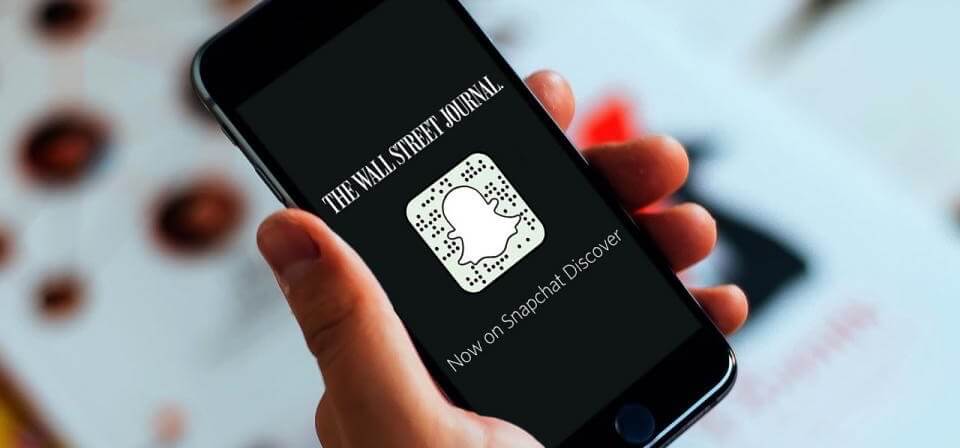
Every year, in the window between Apple’s iPhone event and the day customers can actually buy one, tech press are given access to new devices early– as long as they agree to hold their reviews until a specific time of Apple’s choosing. Apple’s embargo strategy has a history of being choreographed to ensure exposure in the publication it feels is most important on launch day. A discussion on last week’s CTRL-WALT-DELETE podcast between tech journalists Nilay Patel and Walt Mossberg of The Verge and Recode revealed how those priorities have shifted over the years. (more…)
TopAug04Observations
Round Table on Instagram Stories
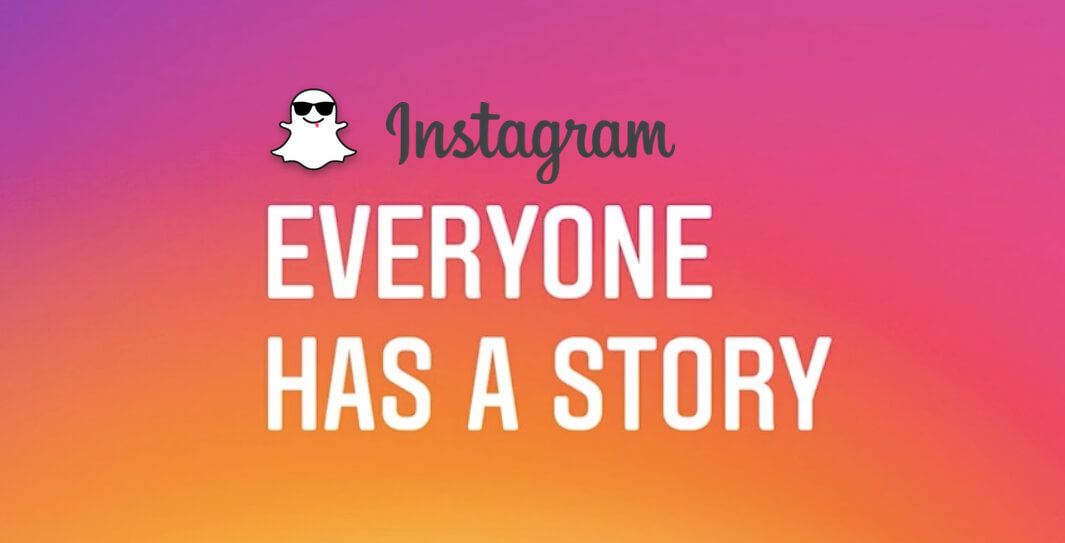
There’s been a lot of buzz in the last week about the new Instagram Stories feature. So, what’s the verdict? Is Instagram stealing SnapChat’s story culture thunder? And will they be successful?
We asked three of our senior digital strategists/ social media junkies to weigh in. Here’s what they had to say:
Matt Chisholm (Senior Digital Strategist and Pokemon Karate Kid):
Facebook tried copying this before, now they’re doing it again with Instagram. Some of the older millennials who use Instagram but not SnapChat may use it, but I think anyone who is already using SnapChat will stick with it as the behavior has already been set along with all the effort of building followers and great accounts to follow. Implications for brands? Negligible.
Claudia Cukrov (Senior Digital Strategist and Resident Snap Story Queen):
Platforms need to know what they do well and own it. Instagram has gone through many evolutions since the acquisition – video, sponsored content and the “videos you may like” curated feed, but essentially it remains a space we build our personal [filter fantasy] culture online. SnapChat has made us question if content needs to live forever and has undoubtedly had a major impact on Instagram’s usage numbers. Time will obviously tell how effective Instagram Stories is at meeting their audience’s evolving digital attitudes, but Instagram should really be asking themselves why they need a seat at the table of temporary, raw and [largely] unfiltered messaging, when they’ve built an empire on the filter fantasy reality. On the plus side, IG Stories allows you to see anyone who’s looked at your story–followers or non-followers. Bad news for crazy ex-cyber stalkers!
Kevin Skobac (SVP, Digital Strategy + Innovation and Avid Facebook Poker):
Instagram has been losing ground in the attention game to Snapchat, so they had to try something sooner than later. On one hand, their implementation of “stories” is more refined and usable than Snapchat (but so was Facebook’s “Poke” app a few years ago). Furthermore, their ability to draft off people’s existing extensive Instagram friends lists means their usage will, at least at first, go from 0 to 60 in no time. On the other hand, it feels uncomfortably forced in the Instagram app– with a whole separate create and browse experience, each of which feels like it’s supporting separate habits and mindsets. Comparatively, the way Snapchat has slowly added features and integrated new capabilities into one cohesive experience has been a work of art, each new element improving what came before it. And, in general, the role of ephemeral feels a lot more closely tied to the mentality and use cases of messaging, than of a curated gallery product like Instagram. So I’d expect the use of Instagram Stories to die down significantly after the initial hype, like every shiny object before it, and for Snapchat to continue its phenomenal growth. Ultimately each platform will have their audiences, and brands will have to decide which communities they want to invest in engaging, and where they can provide value.
Oct01Observations
Social Good Summit, 2015

We dropped by the recent 2015 Social Good Summit to hear some incredible people speak about how technology and new media are driving socially good initiatives around the world. Climate change, female education, data equality and humanitarian aid – particularly around the refugee crisis – drove a great deal of the conversation.
More
Notable speakers included former U.S. Secretary of State, Madeleine K. Albright on the future of humanitarian aid, Morgan Spurlock shared some knowledge about how to use content to reach audiences and Executive Director of Greenpeace International, Kuma Naidoo on climate change and the struggle for justice.
Then there was eleven-year-old Vivienne Har, who at the age of eight raised $100K to fight child slavery with a lemonade stand and has since launched a social network for charitable giving.
Key takeaways from the Summit:
Gender equality requires data equality.
There were a number of conversations about how to best use data to solve problems, but more prevalent was the issue that largely, we’re not collecting the right data to even understand the issues at hand.
Laverne Cox lead a discussion around data equality and the lack of data on the transgendered community. The U.S Census Bureau survey currently doesn’t offer any questions that identify transgendered individuals, and this is largely a global issue.
Shelby Chestnut of the NYC Anti-Violence Project noted that without data capturing crime rates, suicides or career and housing-related acts of discrimination on the transgendered community, we can’t truly understand the issues they’re facing or create better programs to support their needs.
Emily Courey-Pryor, Senior Director of Data2X , also advocated for better data collection methods to drive gender equality and female empowerment. She noted that the great majority of surveys target “heads of the household”, denying the female perspective on a large range of issues. “The data revolution needs to ensure that everyone is counted. There has to be data equality if you want gender equality.”
Content and context are key to mobilizing the masses towards action.
Documentary filmmaker Morgan Spurlock showed a short film about one school kid’s mission to better detect pancreatic cancer. While the media often covers the negative aspects of crisis’, Spurlock believes content is the best asset at driving hope-instilled awareness to the global community, “We live in a world of competing sorrows – people can’t be involved in all of it. We need to tell the story about why this cause matters.”
When pressed about whether short-form content dilutes the complexity or gravity of a cause, Spurlock argued that breaking down issues into bite-size vignettes is far more accessible to the masses.
Raising awareness through great content is only the beginning of the process, just how do we engage people to get off the couch and take action? Spurlock believes content’s true value is the ability to emotionally connect viewers to a perspective that hadn’t previously considered, “If you can get someone to walk in another’s shoes, you will get them to act. Empathy. That’s where it all starts.”
Priscilla Natkins, EVP of The Advertising Council, echoed Spurlock’s views on empathy-driving content, but also noted the huge opportunity of social platform-first initiatives that offer external validation to those who participate, like that seen in the Ice Bucket Challenge.
“Slacktivism” isn’t as slack as we thought.
An ongoing discussion point at SS+K is the idea of “slacktivism” – a common ask by many issue and political-driven causes, where users are urged to “sign a petition” or “tweet a hashtag” to show their support. While many traditional activists see this ask as a passive solution that doesn’t truly solve the problem at hand, in recent months the power of digital and social platforms to mobilize a group towards driving awareness has seen positive change, globally.
Executive Director of Greenpeace International, Kuma Naidoo spoke about Greenpeace’s recent success forcing multinational oil and gas company, Shell out of a proposed plan to drill for oil in the Arctic seas. Shell claims the up-front investment in the venture wasn’t worth the potential return. However, Naidoo argued the efforts of over seven-million people who signed the petition and countless others who took to their social channels under #SaveTheArctic campaign were instrumental in raising public awareness and pressure on the energy giant.
David Miliband, President and CEO of the International Rescue Committee, noted that while the Pope thinks we’re facing a ‘globalization of indifference’, in an increasingly interconnected world, we’re more aware than ever of the local and global issues we face. “One person alone can’t do much, but now we have the ability to mobilize as a group and get things changed.”
Political change > donations.
While many cause-driven groups focus on leveraging their audiences to drive awareness or donations, Sienna Miller, actress and Global Ambassador for the International Media Corps argued the focus should really be around driving advocacy for political solutions.
South-Korean Diplomat Kyung-wha Kang noted the positive impact political change have had on China’s citizens, “In the last fifteen-years hundreds of people have come out of poverty in China due to economic growth.”
While it was evident from many speakers at the Social Good Summit that political action was the end goal, how exactly cause-driven brands translate empathy and audience action into real political change is yet to be solved. It’s a complex issue, and something we hope will be a chief focus at the next event.
Less
May29Observations
Targeting Millennial Cord Cutters

One topic we’ve been increasingly talking about at SS+K is the future of the television business and the growing trend of cord cutting or cord never, particularly among Millenials. To gain some broader market perspective we joined the AdWeek webinar “Targeting Millennial Cord Cutters.”
Here are some insights we gleaned on why digital video is the way to reach this generation – and how brands like HBO, with advancements like HBO Now, are ahead of the curve:
More
- Millennials are watching less TV than ever before, but video viewing is at an all-time high
TV viewership is down 23% year over year. There are more options not only in what to what but in how to watch. In order to be truly successful in reaching millennials, you have to be platform-agnostic.
- Social is mobile
Create content that is shareable and enables participation. People share content for their own social currency and good brands actively think through their posts.
- The cookie is dead
Marketers will need to be far more nimble to track who’s seeing digital ads. Increasingly, in order to determine what’s working, it’s about tying together 3-4 different levels of data to measure response rates and track conversion.
Less
Mar30Observations
In the news

AdWeek: Lenny Stern on Millennials in the workplace
“Part of their day job needs to be about making an impact, doing something meaningful … We as humans should be challenged and pushed. When that kind of spirit comes into a creative industry, it reminds us why we’re here.”
Wall Street Journal: Rob Shepardson on managing information overload
“[My] guiding principle is ABR—always be reading, on the commute home, traveling, in a cab, standing in line at Starbucks”
http://www.wsj.com/articles/how-to-cut-through-your-to-read-pile-1426004078
Digiday: Kevin Skobac on the power of the new Digg community
“A video campaign we created for a client was organically shared on Digg. The result, surprisingly, was more video views from Digg than almost any other property on the Web.”
http://digiday.com/publishers/digg-going-big-video/
TopFeb25Observations
Sure, You’ve Got Stars, But Have You Found the Moonbow?

I’m thrilled to share my first article in Fast Company today on how to find the quietly powerful “moonbow” people in your company. Thank you to everyone who contributed to this piece. Have a read, and let me know what you think.
TopJan23Observations
Yoga and Advertising, Both Threatened By Speed

In this week’s Global Viewpoint I had the opportunity to give some perspective on the balance of act fast, and act purposefully.
“Give our craft the time and energy it deserves, brands the quality they demand and consumers the content they truly care about. Not everything has to be as fast as a Twitter stream, and maybe we will all be better for it.”
You can find the whole piece over at Campaign Live.
TopJan12Observations
What excited us at CES 2015
Each January we travel to the Consumer Electronics Show, a mega conference filled with 200,000 people, miles of new technologies, over the top brand experiences, and flashy parties celebrating the next new big thing. It’s hard not to be overwhelmed by it all, but amidst the craziness we found ourselves fixating on a few key trends that make us excited for the year to come in consumer tech:
More
The future of TV. Satellite cable provider Dish announced a groundbreaking new TV product called Sling TV that offers select premium cable channels, including ESPN, directly over the internet for just $20 / month. Live sports is the most valuable asset cable companies have in their expensive bundle, and Dish’s ESPN deal could be, for many, the straw that broke the camel’s back for cord cutting. Along with HBO announcing an Over-The-Top internet service at some time in 2015, this could be the year the great unbundling of cable actually happens.
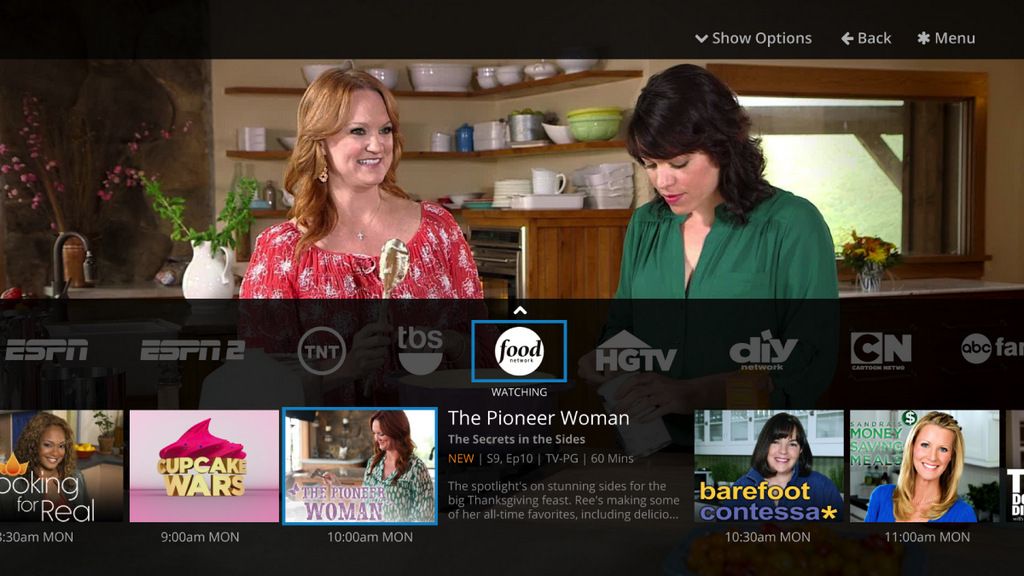
Dish’s Sling TV will be available on just about every internet connected device. Photo: The Verge
Smart devices we actually want. 2015 will give us meaningful reasons to believe in the Internet-of-Things. Parrot Pot: a self regulating and self watering plant bowl; Dash Earphones: wireless headphones report your activity and heart rate; August Smart Lock: a door lock that can be controlled remotely; and eSkin Thermometer: stickers to monitor your child’s temperature in real time via your phone. Better yet, we can expect convergence across connected devices through smart home hubs like Google NEST.

The eSkin Thermometer is a cheap single use sticker that has NFC to communicate with your phone. Photo: Engadget
VR beyond hype. The latest version of Oculus Rift was mesmerizing, and paired with products like the Sixsense Motion Controller it can be transformative. But maybe more impressive was Google Cardboard, which managed to replicate much of the experience with just cardboard and a phone. A base jumping simulation was so real it caused a stomach ache. At minimum it shows the depth of which experiences can be created using the censors in a standard mobile smartphone, how much innovation is still possible.
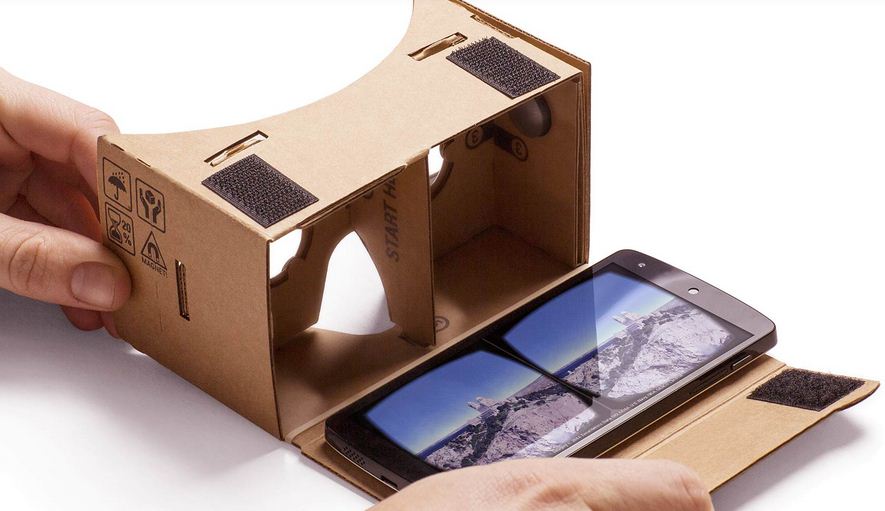
Google Cardboard is just a simple folding kit and a mobile application for your Android phone. Photo: Google Images
A little bit of awe inspiring. We raced cars using just our brainwaves, saw drones that follow behind us as we run, listened to creepy lifelike robots singing to us, and watched autonomous cars that can start and pull out of our driveways for us with the touch of a smartphone button. The future really is still in our imaginations, and all of us have the potential to unlock it. It’s going to be a wild ride.
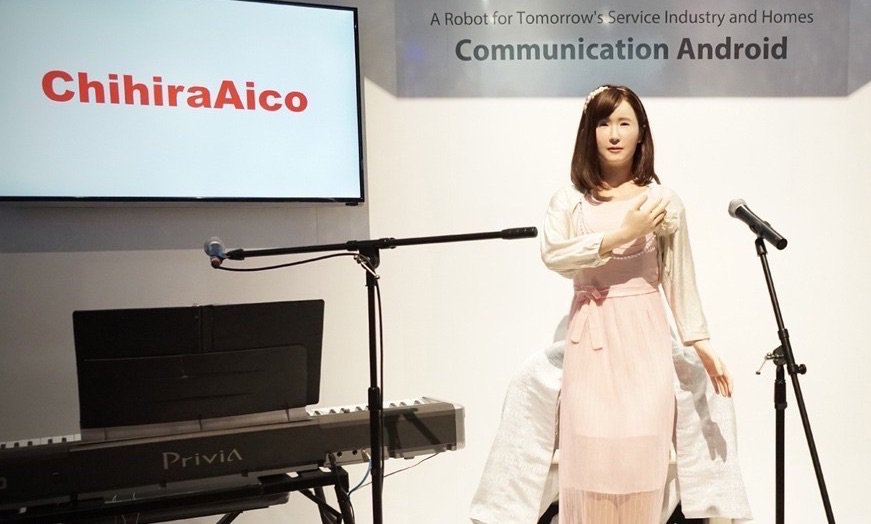
Toshiba’s concept robot, named ChihiraAico, is nearly believable, especially from a distance. Photo: Mashable
Less
